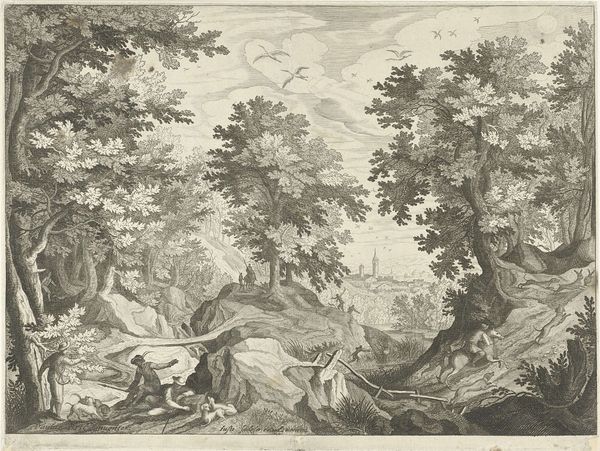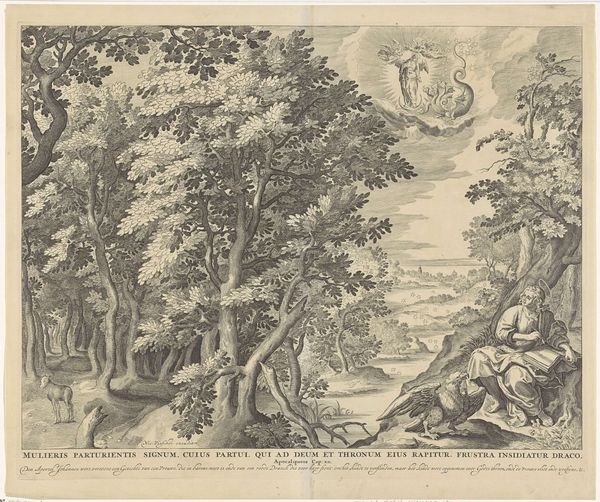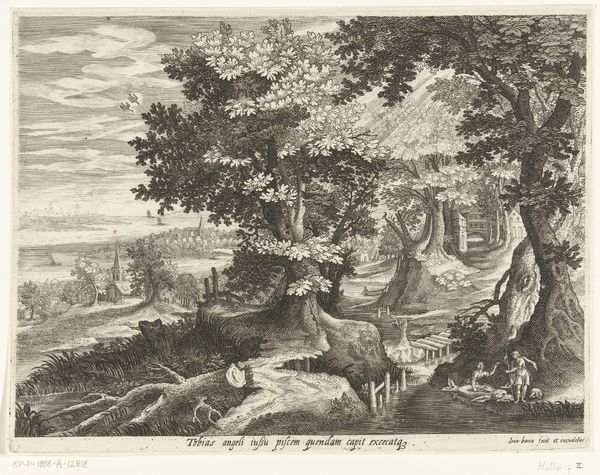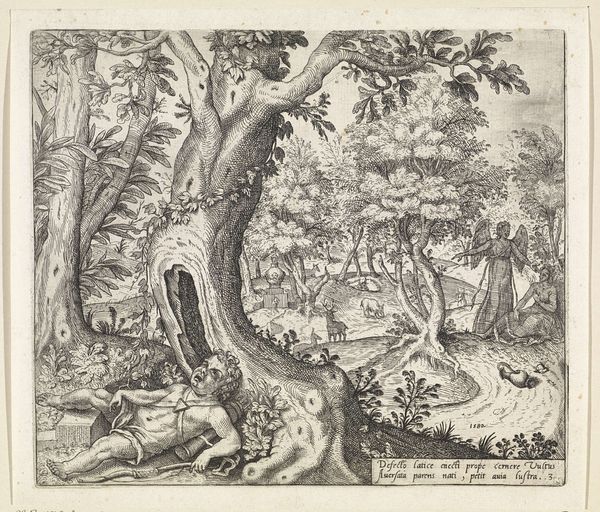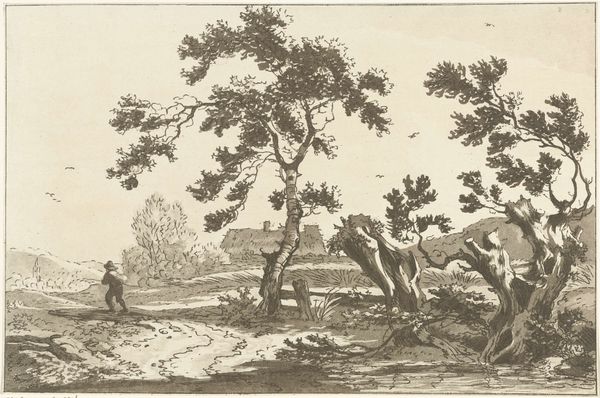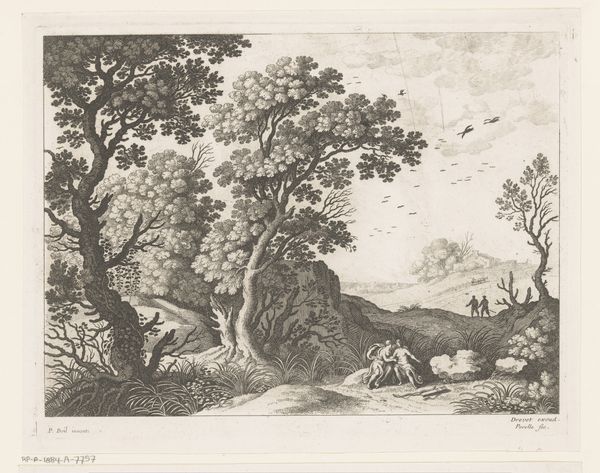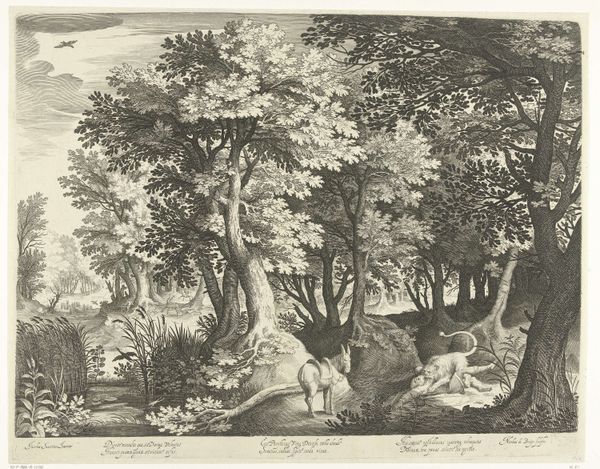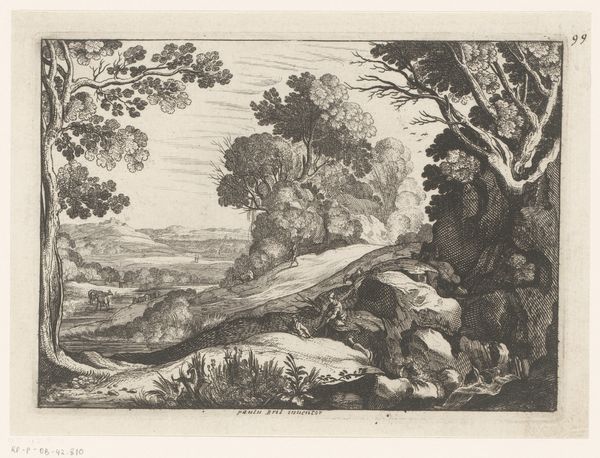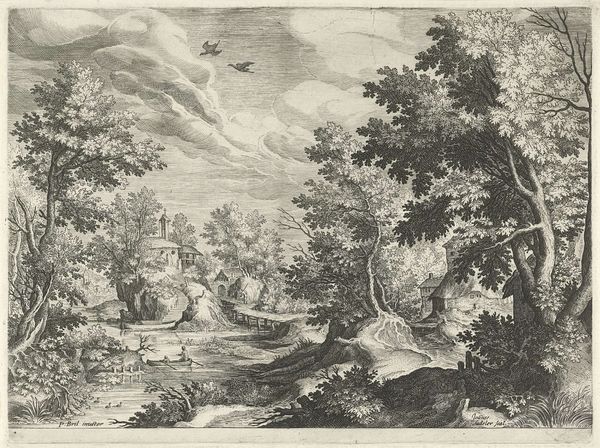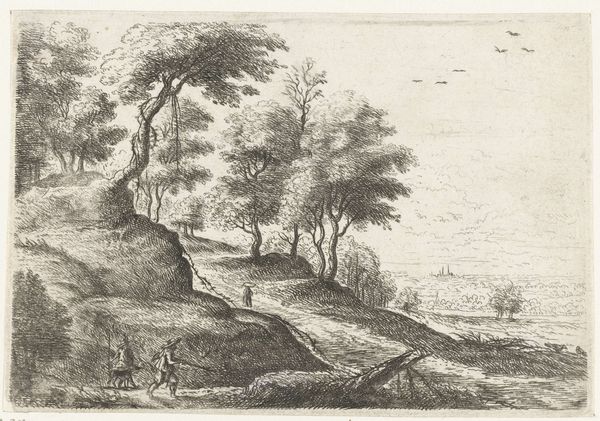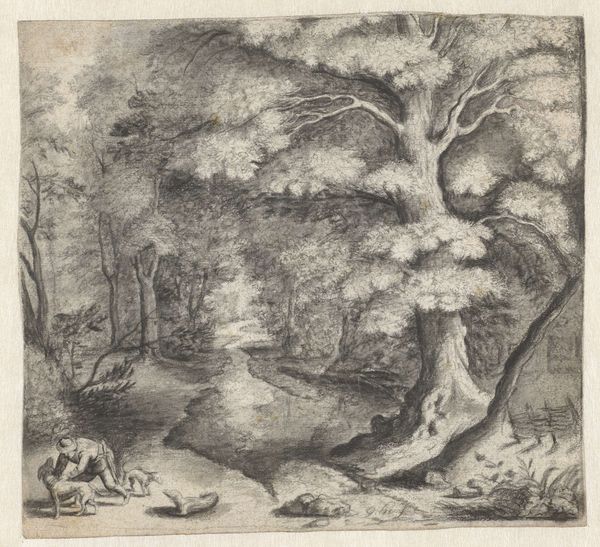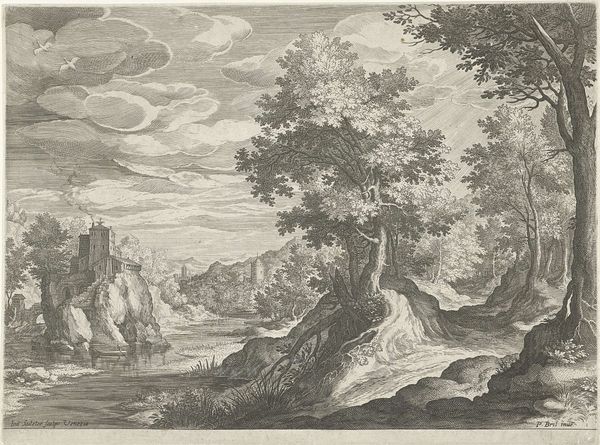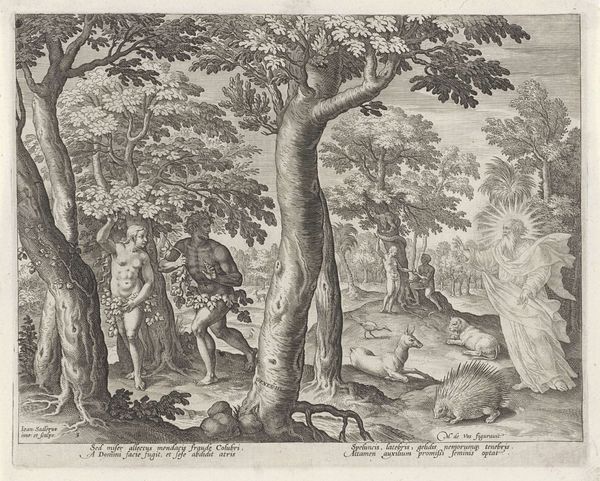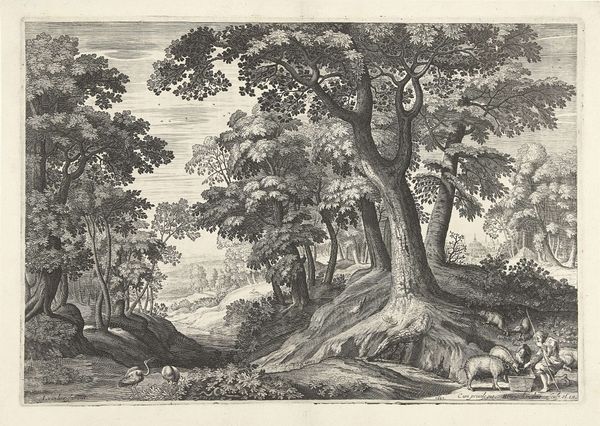
print, engraving
#
allegory
#
pen drawing
# print
#
landscape
#
mannerism
#
figuration
#
line
#
history-painting
#
engraving
Dimensions: height 220 mm, width 268 mm
Copyright: Rijks Museum: Open Domain
This print, "Landscape with the Emblem of Death and Cupid," was made around 1600 by Johann Sadeler I, a Flemish artist working in the printmaking hubs of Antwerp and later, Munich. Sadeler used engraving to create a stark contrast between the idyllic landscape and the somber allegorical figures of Death and Cupid. This contrast speaks to the cultural anxieties of the late Renaissance, a period marked by religious conflict, economic upheaval, and a growing awareness of human mortality. Emblems like this one, combining visual imagery with moralizing text, were popular ways to reflect on these anxieties. The art market in the Netherlands and the Holy Roman Empire was flourishing and becoming increasingly competitive. Artists like Sadeler were under pressure to produce novel and engaging works that would appeal to a wide audience. Prints, in particular, were easily distributed and helped disseminate artistic ideas across Europe. Historians use various resources, from inventories to guild records, to reconstruct the complex social and economic networks that shaped artistic production in this era. By understanding the institutional frameworks within which artists operated, we can better appreciate the complex interplay between art and society.
Comments
No comments
Be the first to comment and join the conversation on the ultimate creative platform.
